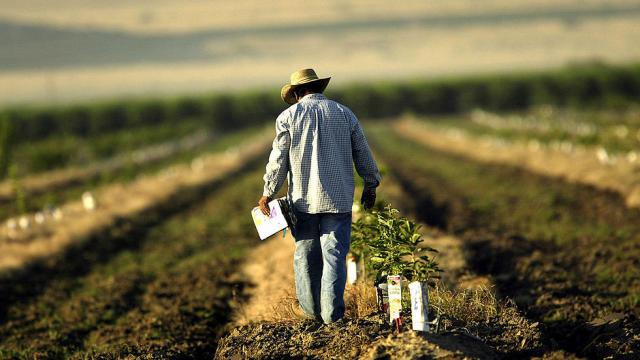
Share On Social!
In California (39.1% Latino) there will soon be a ban on the widely utilized pesticide, chlorpyrifos.
The state, which is one of the most prolific agricultural producers in America, is reportedly the most significant users of the chemical.
“This pesticide is a neurotoxin, and it was first put on the market in 1965,” State Environmental Secretary Jared Blumenfeld told The Californian. “So it’s been on the shelf a long time, and it’s past its sell-by date.
What is Chlorpyrifos & Where Is It Found?
Chlorpyrifos controls foliage and soil-borne insects on a variety of food and feed crops, according to the EPA.
The chemical can be found in both agricultural and non-agriculture operations and is used:
- Mainly as a treatment, in terms of total pounds, in corn
- On soybeans, fruit and nut trees, Brussels sprouts, cranberries, broccoli, and cauliflower, as well as other row crops
- As a treatment for golf courses, turf, and greenhouses
- As a treatment non-structural wood treatments such as utility poles and fence posts
- As a mosquito adulticide and for use in
- In roach and ant bait stations in child-resistant packaging
California Ban
The chlorpyrifos prohibition comes after regulation in numerous states, such as Hawaii. New York is in the process of outlawing the pesticide as well.
Farmworkers, who are predominantly Latino, are also at considerable risk. Currently, at least 60 different kinds of crops in the U.S. receive chlorpyrifos treatment, including almonds, grapes, and oranges.
“This is a historic victory for California’s agricultural communities and for children nationwide,” said Miriam Rotkin-Ellman, of the Natural Resources Defense Council.
“The science clearly shows that chlorpyrifos is too dangerous to use in our fields. Since California uses more chlorpyrifos than any other state, this ban will not only protect kids who live here, but kids who eat the fruits and veggies grown here.”
Technically known as a cancellation, the ban could take up to two years to go into effect. However, the state Department of Pesticide Regulation has suggested that county agriculture commissioners implement stricter rules on how and where agricultural workers can apply the chemical.
California is also offering $5.7 million to fund the development of safer alternatives.
Chlorpyrifos & Child Development
It is well-known that many pesticides can adversely impact health, especially in children and pregnant women.
Furthermore, Chlorpyrifos acts as a neurotoxin and can even cause death.
In particular, children face higher risks due to the residual pesticides in raw fruits and vegetables. They are more likely to come in contact with the substance since they often can put their hands in their mouth. Kids also usually tend to eat and drink more contaminated products, according to the Sierra Club.
Worse, the chemical can harm brain development in babies. It is linked to impacting kids’ literacy, hyperactivity, and IQ.
In Salinas, California (77.2% Latino), educators were thrilled to hear that chlorpyrifos will be banned.
“I’ve been teaching for 23 years here in Salinas, and in those 23 years, I’ve seen an increase of students being diagnosed with autism and learning disabilities and having more health issues,” second-grade teacher at Sherwood Elementary Oscar Ramos told The Californian.
“The Hispanic and Latino students are the ones being affected the most. Because they’re Hispanic and Latino, no one seemed to care enough to ban it. The Ag commissioner, the (Department of Pesticide Regulation), the state. They were putting ag companies above our children. Our kids already start with a huge disadvantage and adding something that’s going to affect their IQ level and their ability to learn, worsens their disadvantage.”
Read more about chemical, environmental exposure!
By The Numbers
142
Percent
Expected rise in Latino cancer cases in coming years



